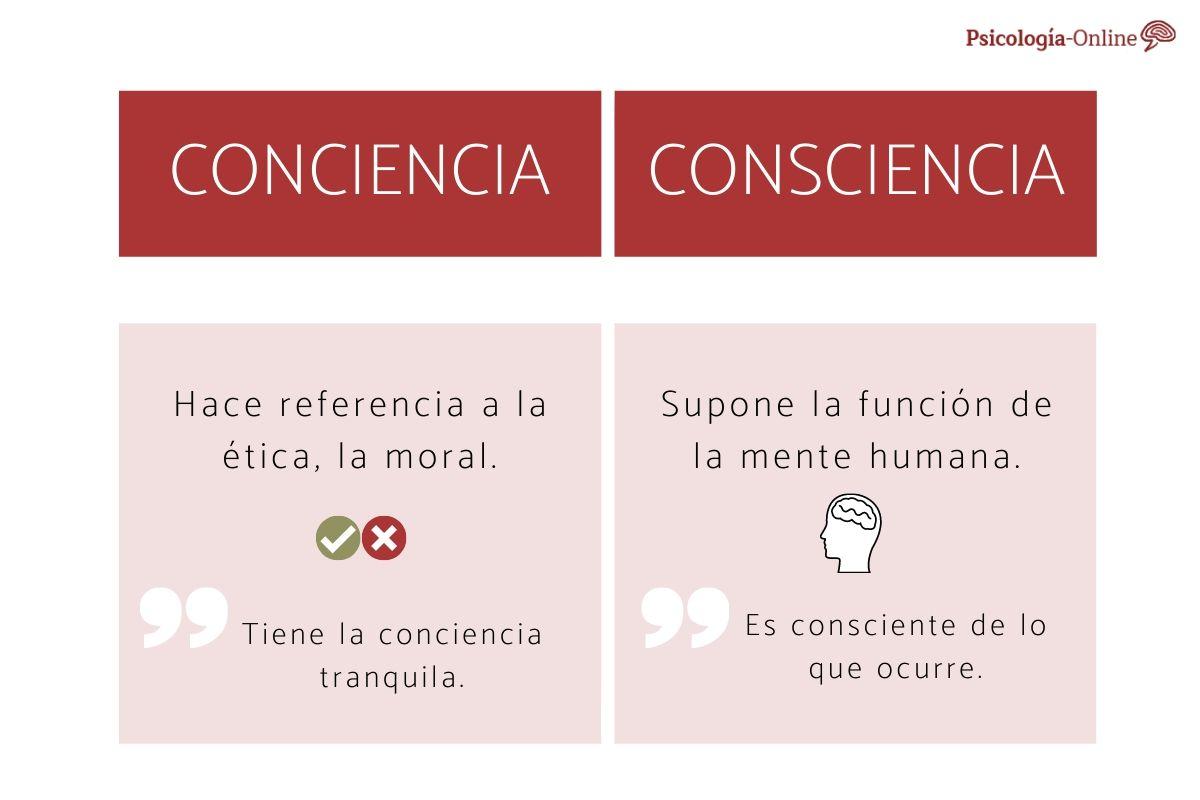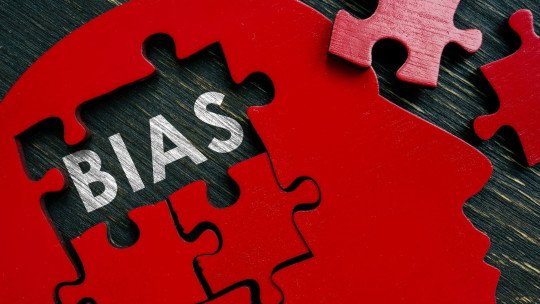People have certain unconscious aids within us which allow us to be at peace with ourselves and with those around us since they help us behave in a socially accepted way.
However, the use of these aids is not always beneficial for us because, if done inappropriately and repeatedly, it can end up causing us to lose some awareness of the reality that surrounds us.
The processes that extend that hand to us are known as defense mechanisms and in this PsychologyFor article, we want to make them known to you, as well as facilitate you what they are, their types and examples so that you learn to identify them and use them appropriately.
What are defense mechanisms in psychology
Defense mechanisms are unconscious processes of individuals that have the protective function Specifically, they are intended to protect the idea of oneself and one’s self-esteem.
The first to describe these mechanisms was Sigmund Freud, who associated them with a struggle, both internal and external, whose main objective was to make the suffering caused by ideas or emotions disappear.
Here you will find more information about Defense mechanisms according to Anna Freud.
What are defense mechanisms for?
The function of these mechanisms is to try to reduce as much as possible the consequences that a very emotionally intense situation can have on an individual so that, in this way, the person can continue functioning normally.
The functions of defense mechanisms are the following:
- Achieve a rebalance between internal and external realities.
- Self-regulate the possibility of satisfying impulses.
- Facilitate an adequate adaptation with society.
- Allow correct personality development
- Protect emotional balance.
Types of defense mechanisms
We find different types of defense mechanisms, classified by different authors. However, in this article, we will rely on the classification used by McWilliams.
- Primary defense mechanisms : These usually appear in people during the first stages of life and tend to be related to attitudes of denial of reality.
- Secondary defense mechanisms : On the contrary, these appear during the late stages of an individual’s development. They are characterized because they preserve the criterion of reality in people.
What are the defense mechanisms
Within each of the general groups of defense mechanisms, we find different more specific mechanisms.
Primary defense mechanisms
- Retreat
- Denial
- Omnipotent control
- Idealization and devaluation
- Projection
- introjection
- Projective identification
- Cleavage
- Dissociation
Secondary defense mechanisms
- Repression
- Regression
- Isolation
- Intellectualization
- Rationalization
- Compartmentalization
- Annulment
- turn against himself
- Displacement
- Reactive training
- Investment
- Performance
- Sexualization
- Sublimation
Primary defense mechanisms: definition
Each of the primary defense mechanisms is explained below:
1. Withdrawal
The individual closes in on himself, distancing himself from reality through the use of fantasies and dreams. The use of this type of mechanism allows the subject escape from a painful reality , but without distorting it. The disadvantage of this type of mechanism is that if the individual uses it repeatedly, this will limit the possibility of taking charge of reality.
Example: a baby who, faced with overstimulation, decides fall asleep to avoid it<
2. Denial
What is happening is accurately rejected with the conviction that, if it is not recognized as real, it is not really happening. What the subject does is block those unacceptable events s so that in this way they do not become part of consciousness.
3. Omnipotent control
It starts from the fantasy base that the subject believe that the source of what happens to us is oneself< It is not considered that others can influence our lives according to their will. This is a good motivating method to achieve the objectives that the subject sets for himself, however, in the long term he will not be able to create logical and real causal relationships that help him achieve his objectives.
4. Idealization and devaluation
In idealization, the subject who uses this mechanism shows a state of dependence on another person to which it grants special value or power. They consider that they will always be able to solve their difficulties.
On the contrary, the devaluation mechanism appears when the subject encounters reality and stops idealizing the individual, realizing that they have no power.
5. Projection
With this mechanism, Subjects attribute their own and unacceptable actions, thoughts and behaviors to other people That is, he denies that he or she carried them out of his or her own free will, but rather that it was the fault of the outside that they occurred.
6. Introjection
An act or behavior is incorporated within the subject that is caused by something that is outside and that, in reality, is completely different from that individual.
This behavior is common in stages of grief, where the person who has suffered the loss begins to adopt the behaviors and ways of being of the deceased person.
7. Projective identification
It is the basis from which the well-known Stockholm Syndrome is based. People try to reduce the anxiety they feel by identifying with the aggressor. It consists of the idea of justify the other person’s actions to avoid the suffering of thinking about the damage they are doing.
8. Split
Mechanism where separates the world into good and bad< It is a form of distortion that helps the individual resolve certain confusing and threatening situations. It is not at all unusual to find a person who at this very moment finds another person bad who last week he considered good.
9. Dissociation
HE creates a different representation of yourself to, in this way, disconnect with the current experience. If individuals resort to this mechanism many times, they may come to consider that different selves exist within them.
Secondary defense mechanisms: definition
Each of the secondary defense mechanisms is explained below:
1. Repression
The person is fully aware of what is happening, however, voluntarily decides to forget or omit it< It is a defense mechanism that triggers an inhibition reflex in the subject. For example, it is usually seen in people who have sexual desires considered unacceptable by the rest of society and repress them.
2. Regression
Unconsciously, the subject returns to adopt behaviors and ways of functioning from their childhood so that this allows you to avoid the conflict you have to face. It is considered a fluctuating and common defense mechanism in all people.
3. Isolation
This defense mechanism consists of separate thoughts from emotions< That is, it is possible to be conscious and can think about a specific event, but the emotional meaning is separated, so it never affects the individual. This mechanism can be very useful for those people whose professions cannot be affected by their emotions, such as doctors, judges, soldiers.
4. Intellectualization
It is very similar to the previously described mechanism, however, in this case, the person does recognize the existence of an affection towards that fact, but is not able to feel it< It could be said that the person theoretically recognizes the affection, but it is not possible for him to express it in himself. That is, the situation is treated cognitively and is not connected to the emotional level.
5. Rationalization
They need justify certain facts to avoid conflict with themselves. Through this mechanism, people select from among all the explanations and reasons for acts which are recognized as unacceptable, those which will allow them to justify them.
6. Compartmentalization
This defense mechanism is used by people who have two or more contrary ideas, behaviors or attitudes at the same time. In this way, they can allow that both ideas do not conflict and contradict each other in your mind, but exist at the same time.
7. Cancellation
The cancellation defense mechanism consists of, unconsciously, compensate for a painful feeling or emotion so that this is completely nullified thanks to other compensatory behavior. For example: a man who exercises gender violence on his wife will bring her roses to nullify his aggressive acts.
8. Turn against yourself
The subject redirects those emotions which were intended towards another onto your own person< It is not anyone's pleasure to realize that someone cannot be counted on, so, instead of feeling anger towards them, the subject who uses this mechanism will develop this feeling towards them.
9. Displacement
This mechanism is based on the redirection of emotions from one natural object to another, since expressing it about the first of these can be too distressing. For example, in a moment of anger with our parents, instead of yelling at them, we go into our room and scream into the pillow.
10. Reactive training
People with aggressive and impulsive attitudes tend to use this mechanism to adapt their behavior. Is about modify an emotion or impulse into its opposite< For example, hate into love, envy into gratitude.
11. Investment
It is related to the interaction of the person with the situation they experience, going from being a passive subject of this where he suffers the painful consequences to being someone active in her. This defense mechanism is seen in those subjects who go from being dependent people to people who need others to depend on them.
12. Performance
People They express their desires or unconscious conflicts through actions so as not to have to be aware of the ideas or affects that accompany them. It is considered an investment mechanism, but with the addition of the subject performing an action. Within psychology, this mechanism is known in turn as acting out Sensations of terror or pain are transformed into pleasurable experiences This mechanism is usually observed in subjects who are victims of aggression and depression, who, to make their situations more bearable, turn bad moments into pleasant and rewarding situations. Sublimation is the mature defense mechanism which allows individuals to channel all those drives (stimuli or impulses, normally of sexual or aggressive content) and direct them towards behaviors considered acceptable in our society.13. Sexualization
14. Sublimation
This article is merely informative, at PsychologyFor we do not have the power to make a diagnosis or recommend a treatment. We invite you to go to a psychologist to treat your particular case.
If you want to read more articles similar to Defense mechanisms: what they are, types and examples we recommend that you enter our Cognitive Psychology category.
Bibliography
- Camacho, EB, Chávez-León, E., Uribe, MPO, Jiménez, AY, & López, ON (2010). Levels of psychological functioning and defense mechanisms. Mental health, 33(6), 517-526.
- Cramer, P. (2013). Empirical studies on defense mechanisms. Subjectivity and Cognitive Processes, 17(1), 97-117.
- Freud, A., & Carcamo, C.E. (1961). The self and defense mechanisms (Vol. 3). Barcelona: Paidós.
- Hinojosa, A. (1968). Psychological mechanisms of adaptation and defense.








